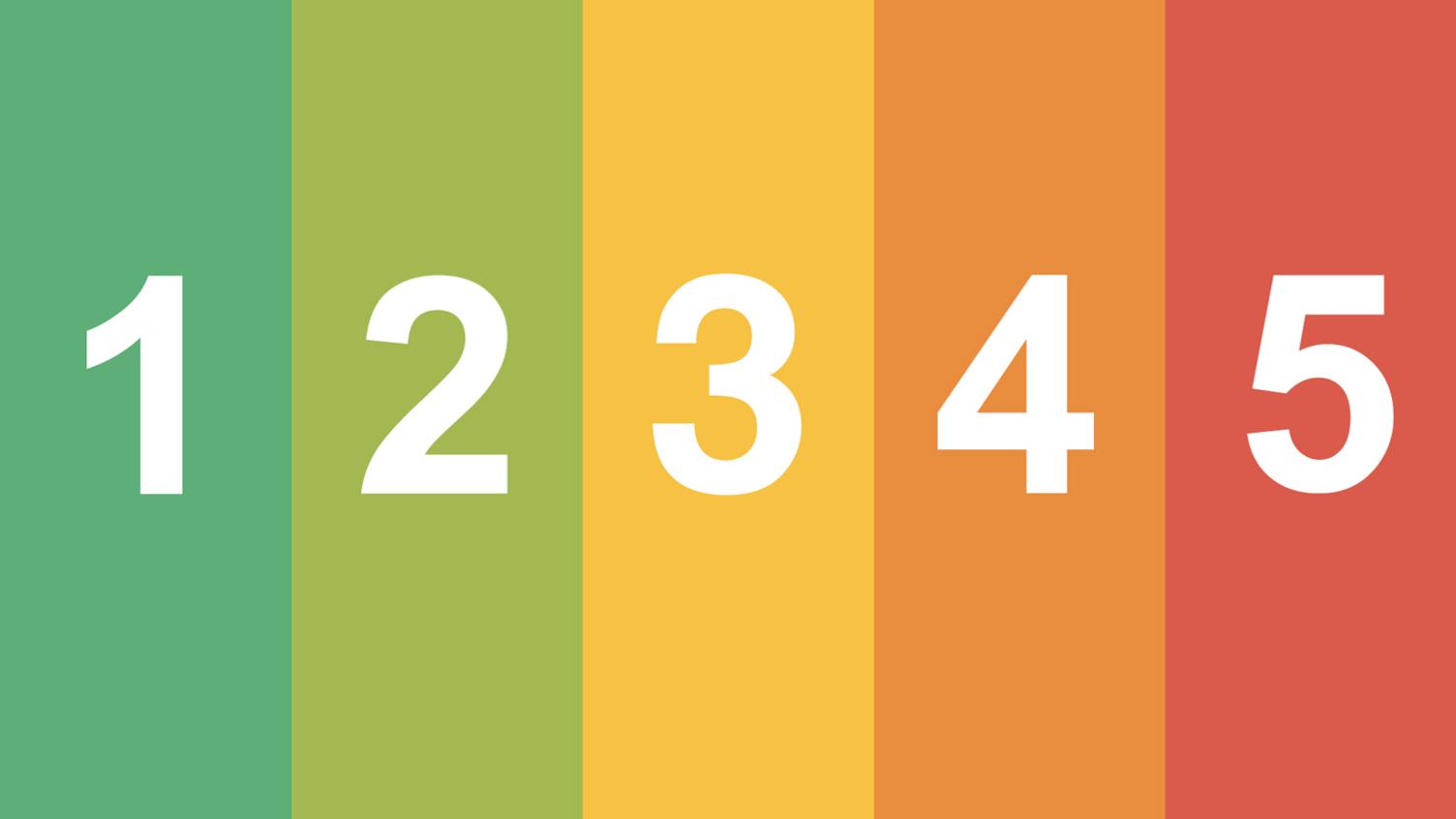Coronavirus levels 'burning quite hot' in some of UK
- Published
- comments
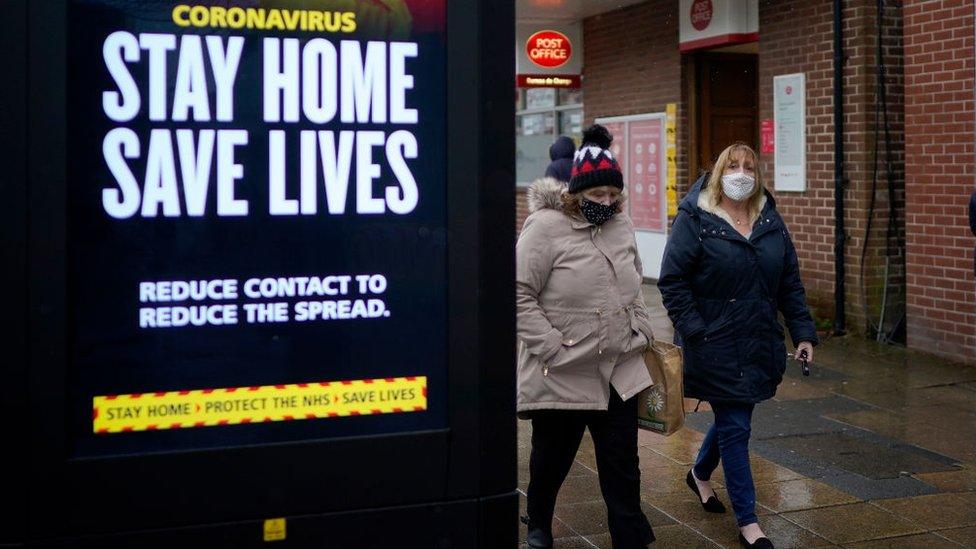
Some areas of the UK are "burning quite hot" with rising levels of new coronavirus infections, England's deputy chief medical officer says.
Although coronavirus levels are still decreasing across much of the UK, there are hotspots that buck the trend.
These are in the Midlands and east and west coast of England and some parts of Scotland and Northern Ireland.
Prof Jonathan Van-Tam told Friday's Downing Street briefing the battle is not yet won.
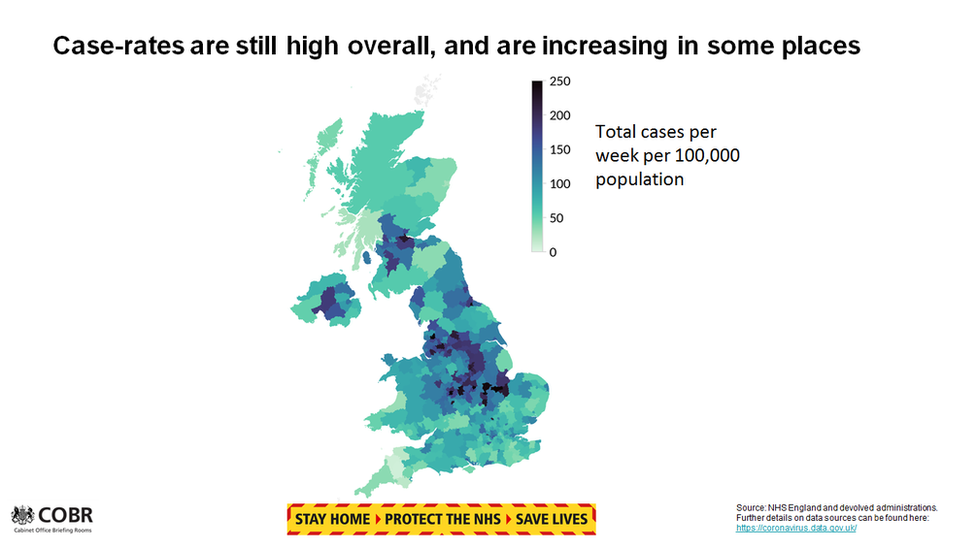
He warned people not to wreck it by relaxing the rules too early.
Health Secretary Matt Hancock said the aim was still to come out of lockdown together as a nation, but did not rule out measures being imposed locally if needed. The differences between areas now are smaller than those seen in the autumn.
Health Secretary Matt Hancock: "The stay at home rules are still in place for a reason"
Prof Van-Tam said: "In some parts of the UK, case rates are changing, albeit slowly, in the wrong direction.
"This is not a good sign and reinforces the fact that I'm afraid this battle at the moment is not won."
The latest R number, external - 0.6 to 0.9 - suggests infection numbers are shrinking overall in the UK. It means that, on average, every 10 people infected will infect between 6 and 9 other people.
Hospital pressures and deaths are still high, however, despite the UK's coronavirus alert level having been lowered from the maximum five to four.
Another 345 people in the UK have died within 28 days of a positive coronavirus test, bringing the total to 122,415, or 135,613 if you include death certificates that mention Covid-19.
There were 15,485 patients in hospital with coronavirus on 24 February 2021.
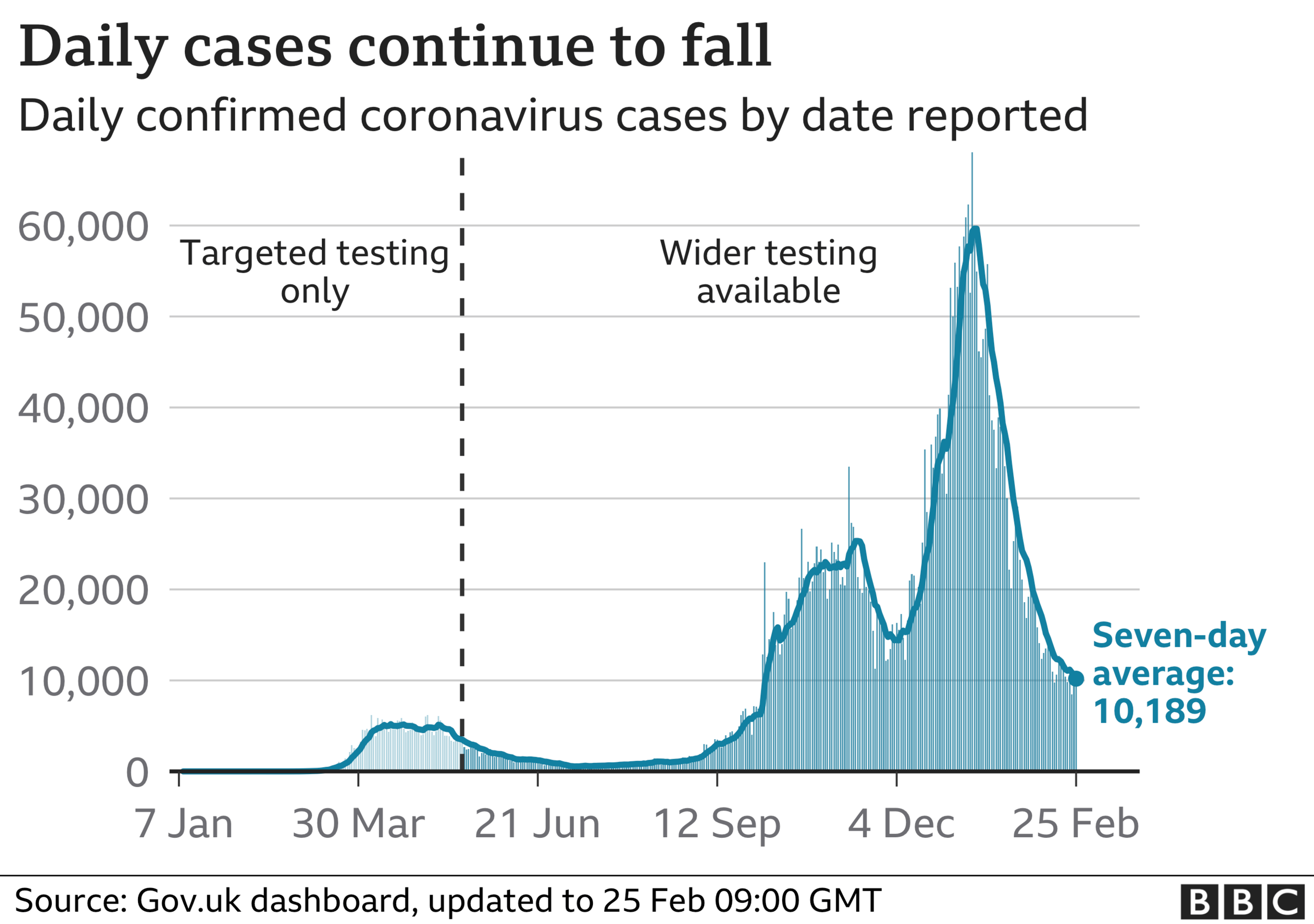
People are still being advised to take precautions to stop the spread. There is still lots of the virus circulating.
Latest ONS results, external, based on tests from people whether or not they had symptoms, suggest:
One in 145 people in England has the virus (compared to one in 115 the week before)
In Northern Ireland, it is one in 195 (compared to one in 105 previously)
In Wales, it is one in 205 (compared to one in 125 before)
In Scotland, it is one in 225 (compared to one in 180)
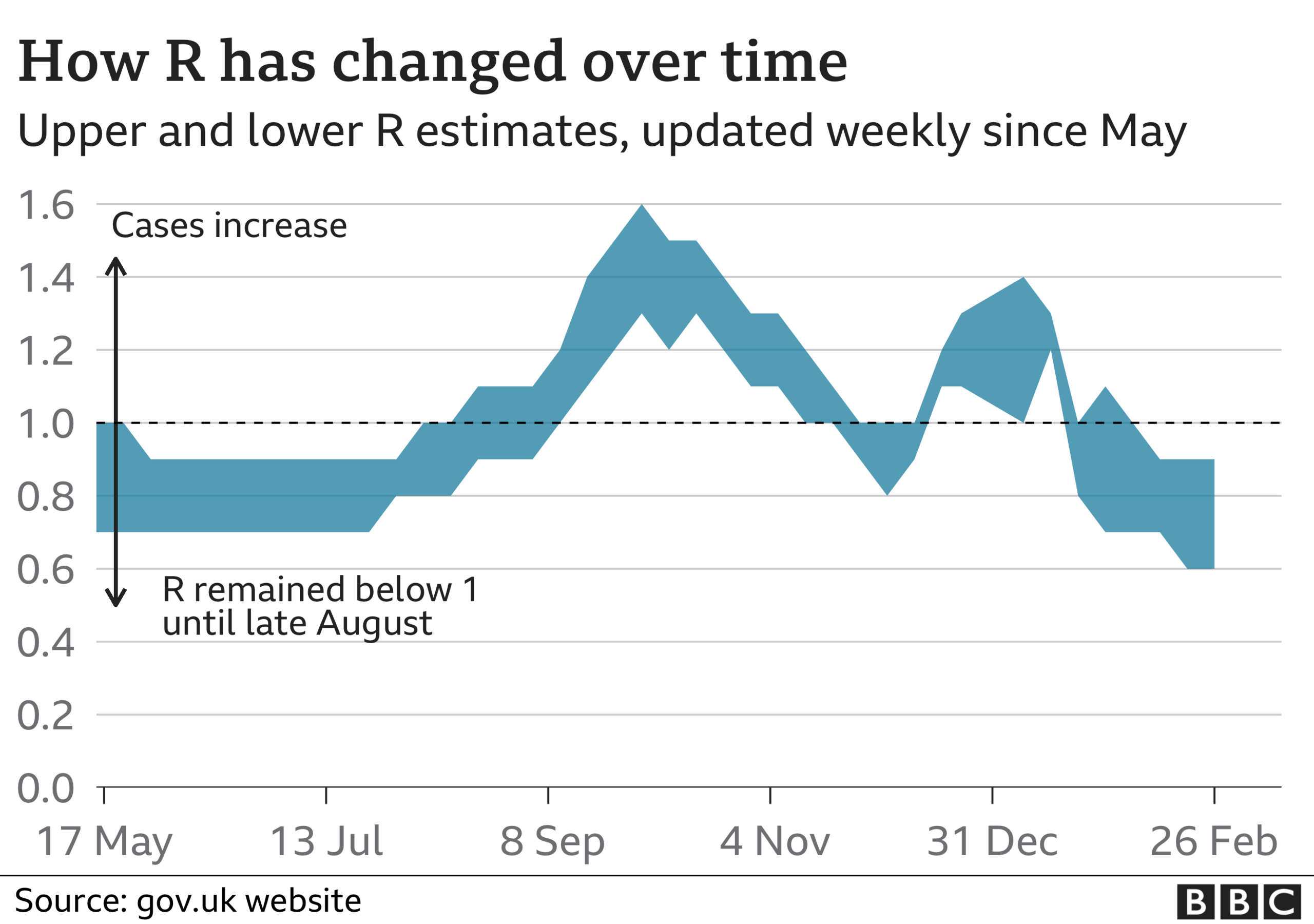
Meanwhile, the chair of Britain's Covid vaccine advice committee says the next phase of the vaccine rollout should focus on age groups rather than occupations.
It means people aged 40-49 will be the next in line to get a vaccine from mid-April, after all vulnerable groups and the over-50s are covered.
The Joint Committee on Vaccination and Immunisation said the priority was to deploy vaccines as quickly as possible to protect lives, and that targeting occupational groups would be more complex and may slow the rollout.
Latest figures show 19,177,555 people in the UK have received a first dose of Covid vaccine and 736,037 have been given a second dose.



VACCINE: When will I get the jab?
NEW VARIANTS: How worried should we be?
COVID IMMUNITY: Can you catch it twice?
LOOK-UP TOOL: How many cases in your area?

Related topics
- Published13 December 2021
